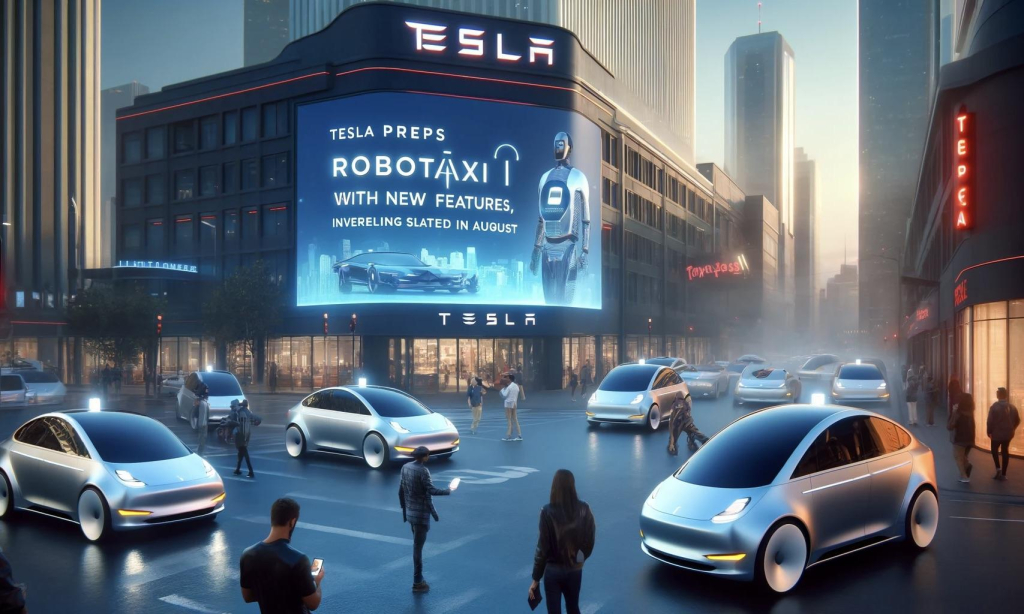Elon Musk has once again turned heads with his latest announcement about Tesla’s development of a Robotaxi API, complete with groundbreaking features that promise to reshape the future of autonomous transportation. Scheduled for unveiling in August, the Robotaxi API will allow third-party developers to integrate their applications seamlessly with Tesla’s autonomous vehicles, paving the way for a whole new realm of possibilities in mobility services. Here’s what we know so far about the upcoming Tesla Robotaxi API and its potential implications.
A New Era for Autonomous Transportation

Tesla’s Robotaxi API is designed to connect autonomous vehicles with service providers, enabling businesses to utilize Tesla’s fleet for a variety of uses—from ride-sharing to delivery services. According to Musk, the API will feature state-of-the-art safety protocols, advanced navigation systems, and custom user interfaces, allowing users to tailor rides and services according to their preferences. This innovation could make Tesla’s Robotaxi fleet one of the most versatile and user-friendly autonomous networks in the world, with implications for urban mobility, transportation efficiency, and the broader development of smart cities.
The August unveiling will reportedly showcase how the API can be used by developers to build custom applications, enabling companies to integrate autonomous Tesla vehicles into their platforms for a range of purposes. With Musk’s ambitious goal of producing a fleet capable of operating without human intervention, this announcement sets the stage for a future in which autonomous Tesla vehicles can be rented, routed, and managed by businesses and individuals alike.
Key Features and Functions of the Robotaxi API

While Musk has yet to release detailed specifications, there are a few confirmed features that have generated substantial buzz.
- Dynamic Fleet Management: The Robotaxi API is expected to include fleet management tools that allow users to locate, deploy, and monitor Tesla vehicles in real time. Whether a user wants to send a vehicle for a scheduled pickup or reroute it mid-journey, the API will provide this flexibility.
- User Customization Options: Musk hinted that the API will enable custom ride experiences, where developers can program Tesla vehicles to provide specific in-ride services or options, including entertainment, custom routes, or even certain safety protocols.
- Advanced Safety Integration: Safety remains a primary concern for Tesla, and Musk has promised that the API will include access to Tesla’s full suite of safety features, including real-time hazard detection, autonomous emergency braking, and enhanced autopilot functionality.
- Efficient Scheduling Algorithms: The Robotaxi API will also offer sophisticated scheduling algorithms designed to maximize vehicle utilization and efficiency. This means businesses will be able to minimize idle time, optimize routes, and ensure faster service delivery.
Potential Applications Across Industries

With these features, Tesla’s Robotaxi API has the potential to revolutionize multiple sectors. For ride-sharing companies, the integration of Tesla’s autonomous vehicles means reduced operational costs and streamlined services. Logistics and delivery services can leverage Tesla’s robotaxi fleet to handle local deliveries without the need for human drivers, potentially decreasing turnaround times and reducing traffic congestion.
The entertainment industry may also explore possibilities with Tesla’s Robotaxi API. For instance, developers could create in-ride experiences, transforming Tesla rides into immersive entertainment spaces. Some experts also predict that healthcare and emergency services could benefit from this API, using Tesla’s autonomous vehicles for patient transportation or mobile healthcare units, especially in urban areas where quick and efficient travel can be lifesaving.
Challenges and Potential Concerns
Despite the excitement, the rollout of Tesla’s Robotaxi API does come with some challenges. Regulatory hurdles remain a significant barrier, especially in jurisdictions that have stringent rules on autonomous vehicle usage. Moreover, the ethics and safety of autonomous vehicle deployment continue to be hotly debated topics. Musk, however, has assured stakeholders that Tesla is working closely with regulatory bodies to ensure that all safety and compliance standards are met.
Additionally, the implementation of the API could disrupt jobs in sectors dependent on traditional drivers, sparking debates on the economic implications of autonomous fleets. Musk has acknowledged these concerns, suggesting that the positive impacts—such as enhanced urban mobility, lowered costs, and the creation of new technology jobs—will ultimately outweigh the downsides.
Conclusion: A Glimpse into the Future
The August unveiling of Tesla’s Robotaxi API is poised to be a landmark event, potentially setting a new standard for autonomous transportation. Musk’s vision of a world where Tesla’s Robotaxis can be seamlessly integrated into various applications reflects his ambition to position Tesla as a leading player in not just automotive manufacturing, but also in urban mobility and smart city technology.
If successful, the Robotaxi API will not only transform Tesla’s role in the tech and automotive industries but could also inspire a new wave of innovation in autonomous transportation and mobility solutions worldwide.





